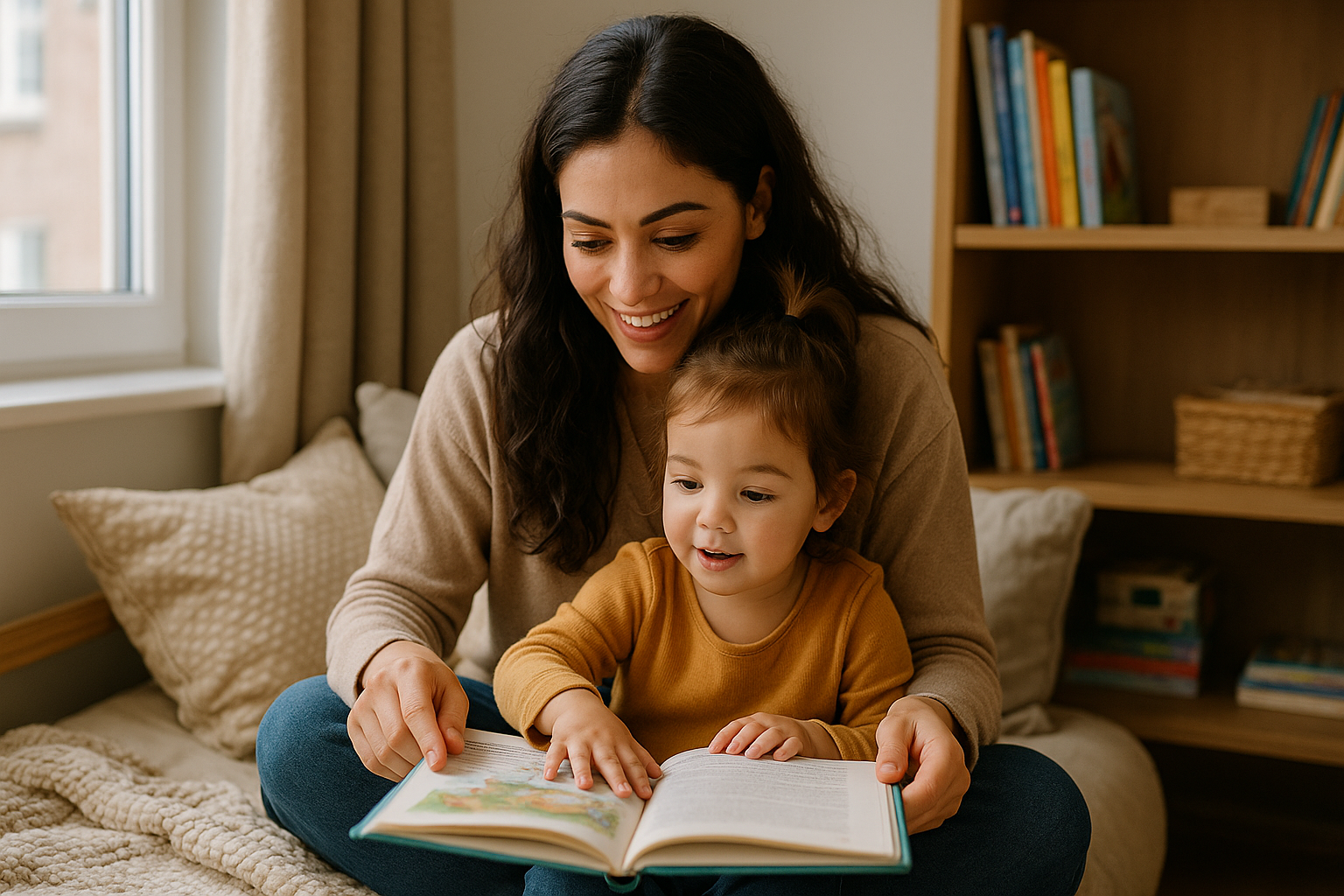Instilling a love for reading during early childhood can shape a child’s academic path, language skills, and imagination for life. But developing a reading habit is less about teaching children to read and more about creating meaningful, joyful reading experiences—starting from infancy. This article will guide parents and caregivers on how to naturally foster a love of books and stories in children ages 0 to 6.
Why Early Reading Habits Matter
When young children are exposed to books and stories, they develop:
- Stronger vocabulary and language comprehension
- Better focus and listening skills
- Early phonemic awareness (sound recognition)
- A longer attention span over time
- Curiosity, empathy, and creativity
Even if your child can’t yet read independently, regular exposure to books makes reading feel safe, enjoyable, and important.
Start Early—Even Before They Can Talk
You don’t have to wait until your child knows words.
- Babies love rhythm, tone, and sound—read in a calm, expressive voice.
- Use books with high-contrast images, soft textures, or mirrors.
- Make reading part of your daily routine, like after naps or before bedtime.
The goal isn’t understanding, but building familiarity and connection.
Make Reading a Ritual
Children thrive with routine. Create a consistent reading time:
- Morning storytime: Start the day with a short book.
- After lunch wind-down: Use a book to ease transitions.
- Bedtime stories: One of the best moments for quiet, bonding, and learning.
Let your child choose a favorite and repeat it often—it builds memory and anticipation.
Choose Age-Appropriate Books
For Ages 0–2:
- Board books with thick pages
- Simple images and bold colors
- Few words per page
- Books with textures or flaps (e.g., Touch and Feel, Peekaboo)
For Ages 2–4:
- Rhyming and repetitive books
- Animal or vehicle themes
- Emotion-themed stories (e.g., The Color Monster)
- Books that encourage interaction (“Where is the cat?”)
For Ages 4–6:
- Stories with characters and plot
- Alphabet and counting books
- Books with more complex vocabulary
- Storybook series (e.g., Pete the Cat, Frog and Toad)
Let Your Child Take the Lead
Offer choices:
- “Do you want the bear book or the duck book?”
- Let them flip pages, point, or even “read” to you from memory.
- Follow their interest—even if it means reading the same story every night.
Giving them ownership turns reading into a personal joy, not a chore.
Engage Through Expression and Interaction
Bring stories to life:
- Use different voices for each character.
- Ask open-ended questions: “What do you think will happen next?”
- Encourage predictions and reactions: “Was that a surprise?”
- Point to pictures and describe details together.
Interaction turns passive listening into active thinking.
Build a Reading-Friendly Environment
Make books as visible and accessible as toys:
- Place low shelves or baskets with a rotating selection of books.
- Include books in every room: bedroom, bathroom, kitchen.
- Create a reading nook with pillows, a blanket, and good lighting.
Avoid treating books as precious objects—let children explore them freely.
Model a Reading Lifestyle
Children imitate what they see.
- Let your child see you read books, newspapers, or magazines.
- Share stories about books you loved as a child.
- Say things like, “I’m going to read while I drink my tea,” or “I want to find a new story.”
If reading is normal in your world, it becomes normal in theirs.
Use the Library as a Weekly Outing
Make a trip to the library a fun adventure:
- Let your child pick new books each time.
- Attend storytime events or puppet shows.
- Explore different genres and formats (audio books, picture books, music books).
Libraries are powerful spaces for building positive reading habits.
Use Books to Talk About Feelings and the World
Choose books that:
- Reflect your child’s experiences (starting preschool, becoming a sibling).
- Introduce new cultures, abilities, and perspectives.
- Help navigate difficult emotions (anger, fear, jealousy).
Books can be mirrors, windows, and guides.
Embrace Repetition
Children love reading the same book over and over—and that’s okay!
- Repetition helps with language retention and confidence.
- Familiar stories become “safe spaces” for learning.
- Eventually, kids will begin to “read” along or memorize lines.
Don’t Pressure or Force Reading
Your role is to build positive associations, not rush literacy milestones.
- Avoid “quiz-style” questions: Instead of “What’s this word?” ask “What do you see here?”
- If they lose focus, put the book aside and try again later.
- Don’t worry if they prefer to turn pages or play with the book at first—it’s all part of learning.
Digital Books: Use with Care
If using tablets or e-books:
- Choose interactive read-alouds, not apps filled with distractions.
- Read together, discussing the story as you go.
- Limit screen time and prioritize physical books when possible.
The experience should still feel shared and focused.
Final Thoughts: Raise a Lifelong Reader
Helping your child develop reading habits isn’t about flashcards or phonics drills. It’s about sharing joy, language, and love. Every bedtime story, silly rhyme, and cozy reading nook builds the foundation for a child who reads because they want to—not because they have to.
Let stories fill your home, your voices, and your hearts.
